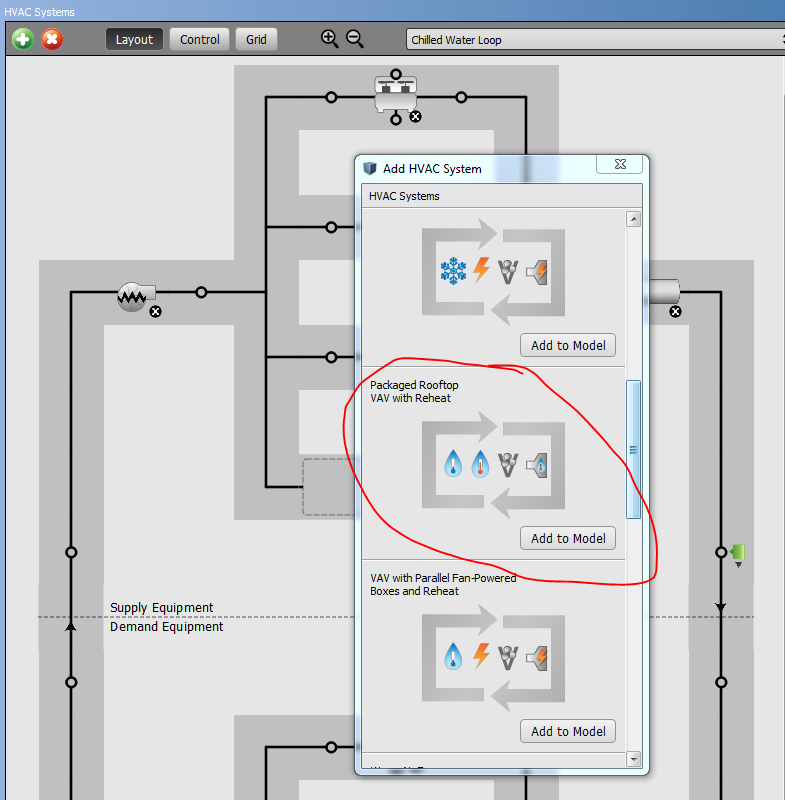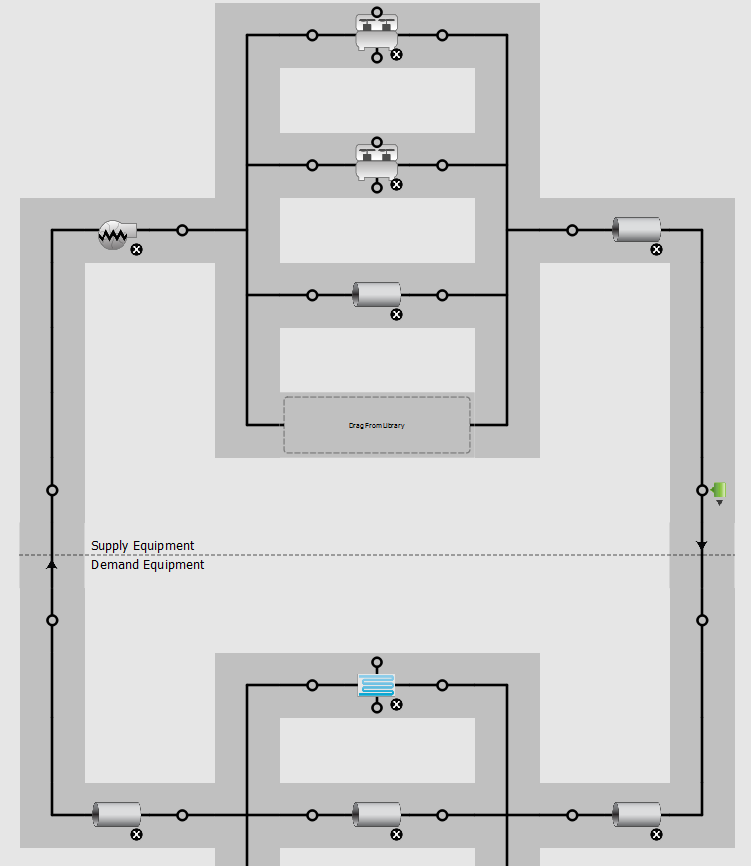 | 1 | initial version |
If you are modeling multiple large buildings, I would suggest making the building models individually and using the district heating and cooling objects to get the plant load for each one.
Often engineers will use a separate software to model the plant to be able to better capture system operation and control. You can also refer to the engineering documentation for EnergyPlus and implement the same model logic in a spreadsheet with known loads and whether data. I would recommend this approach if you have many large buildings.
However, if you have many small buildings all part of the same project, it is possible to model this directly in the OpenStudio. If you use this approach, I recommend reading the OpenStudio tutorial on creating HVAC system plant loops to get an idea of how your setup should look.
You can see an example of this by adding a template system from the HVAC systems tab:

Your system will look something like this:

Chilled water loop - you have chillers on the supply side and cooling coils on the demand side. The little circle icons above and below the chiller indicate that it is attached to another loop (the condenser loop). Clicking the circle will bring you to the condenser loop:

On the condenser loop, your chillers are on the demand side and cooling towers on the supply side.
If you want to control the sequence of the chillers and cooling towers in a specific way, you need to specify that in your model. See these recent questions on the forum: Sequential load distribution scheme seems not working and Optimal operation of plant chillers (EnergyPlus).
 | 2 | No.2 Revision |
If you are modeling multiple large buildings, I would suggest making the building models individually and using the district heating and cooling objects to get the plant load for each one.
Often engineers will use a separate software to model the plant to be able to better capture system operation and control. You can also refer to the engineering documentation for EnergyPlus and implement the same model chiller and cooling tower logic in a spreadsheet with known loads and whether weather data. I would recommend this approach if you have many large buildings.
However, if you have many small buildings all part of the same project, it is possible to model this directly in the OpenStudio. If you use this approach, I recommend reading the OpenStudio tutorial on creating HVAC system plant loops to get an idea of how your setup should look.
You can see an example of this by adding a template system from the HVAC systems tab:

Your system will look something like this:

Chilled water loop - you have chillers on the supply side and cooling coils on the demand side. The little circle icons above and below the chiller indicate that it is attached to another loop (the condenser loop). Clicking the circle will bring you to the condenser loop:

On the condenser loop, your chillers are on the demand side and cooling towers on the supply side.
If you want to control the sequence of the chillers and cooling towers in a specific way, you need to specify that in your model. See these recent questions on the forum: Sequential load distribution scheme seems not working and Optimal operation of plant chillers (EnergyPlus).
